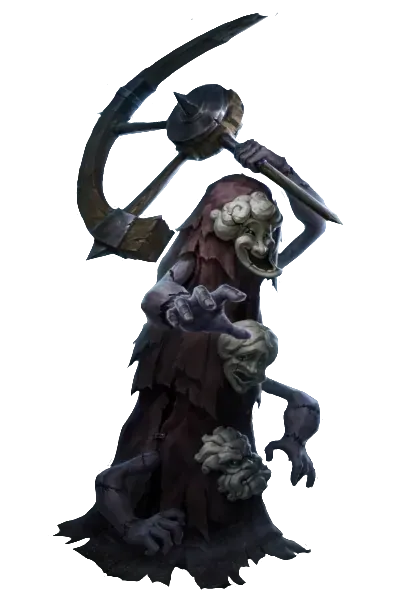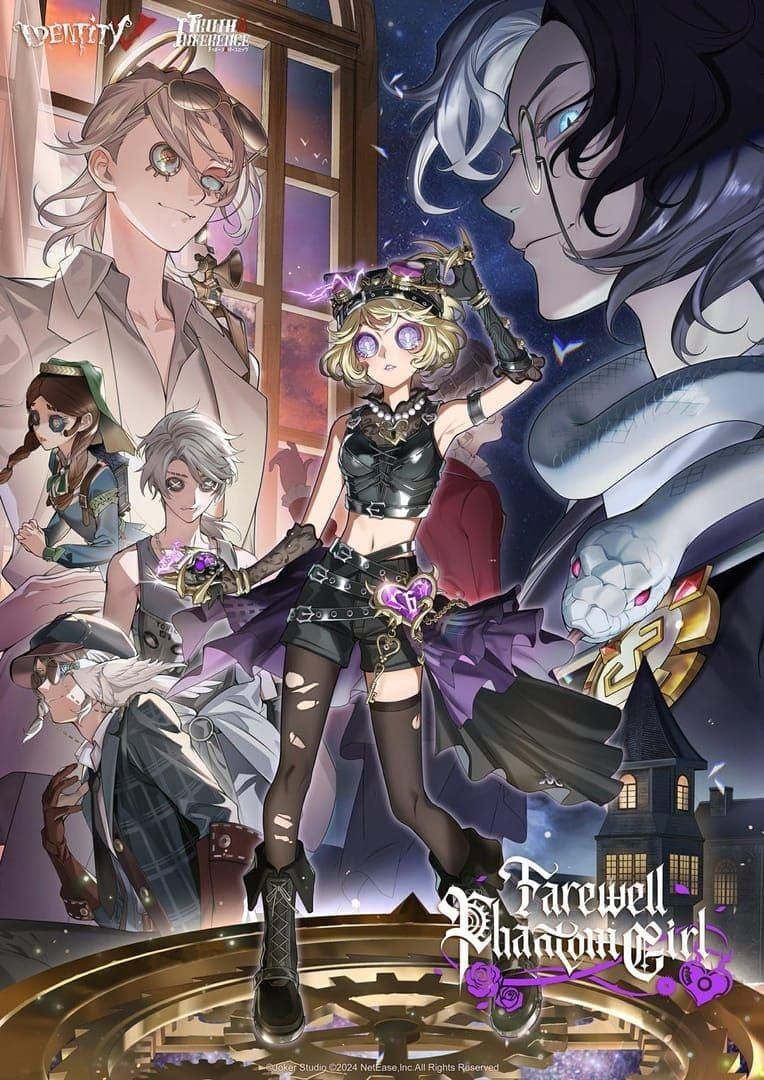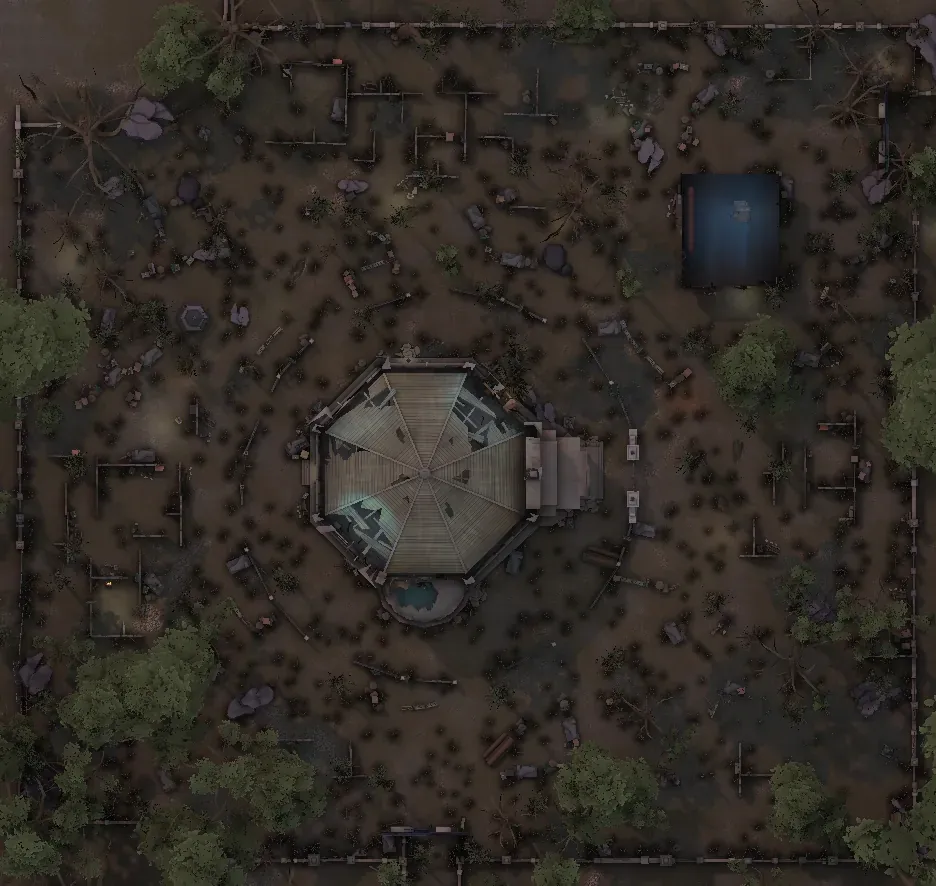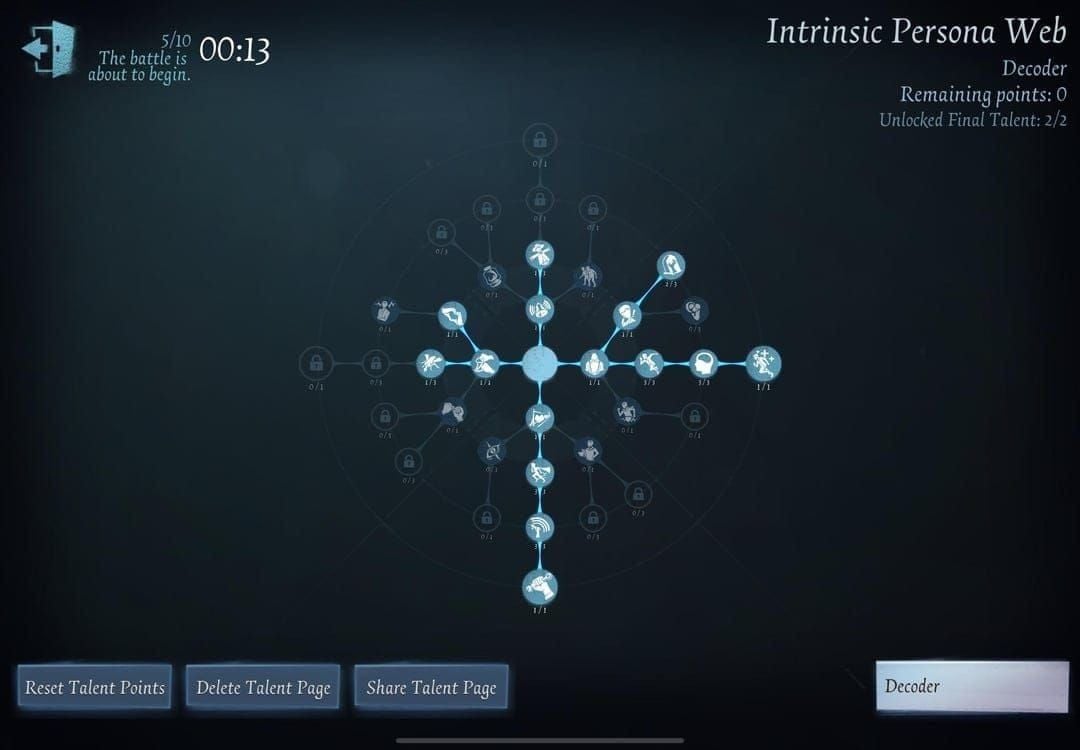Understanding Identity V 8v2 Mode Fundamentals
Let's be honest—8v2 mode isn't just regular Identity V but bigger. It's a completely different beast that'll humble even seasoned 1v4 veterans.
Game Rules and Mechanics
Here's what you're dealing with: 2 hunters hunting 8 survivors across 7 cipher machines instead of the usual 5. Each cipher takes 81 seconds to decode (yeah, that adds up fast), and survivors can tank 3 hits before going down. The twist? You can carry 2 items at once, which opens up some wild strategic possibilities.
Server windows are pretty specific—casual runs 6:00-12:00, 14:00-19:00, and 21:00-0:00, while ranked gets squeezed into 4:00-6:00, 12:00-14:00, and 18:00-22:00. Exit gates need 18 seconds to crack open, and Detention lasts a brutal 120 seconds with double damage. Trust me, you don't want to be caught in that window.
The devs banned some seriously oppressive hunters here—Dream Witch, Photographer, Undead, Clerk, Goatman, and Hermit. Smart move, honestly. These characters would've made matches absolutely miserable with their control potential in an 8v2 environment.
One neat feature is the Phone Booth system. When you're confined (because let's face it, it'll happen), you can actually purchase items to help your team. It's a small consolation, but every bit helps.
For those looking to expand their character roster with premium costumes and hunters, Identity V Echoes recharge through BitTopup offers competitive pricing with instant delivery and round-the-clock support.
Key Differences from 1v4 Mode
Forget everything you know about team composition from regular matches. With 8 survivors, you need specialized roles: 2-3 dedicated decoders (think Mechanic and Prisoner), 1-2 kiters who can actually survive extended chases (Priestess and Antiquarian shine here), and 2 solid rescuers like Mercenary or Coordinator.
The math changes dramatically too. Teams should target 6-7 minute cipher completion while keeping rescue efficiency high. Here's a pro tip that took me way too long to learn: prime that final cipher at 98-99% to sync Borrowed Time activation (that sweet 50% speed and healing boost) with your kiting phases.
The ranking system uses eight tiers from Worker Bee all the way up to Hydra/Titan. You'll gain +9 points for 3+ escapes but lose -8 for fewer than 2. Higher tiers introduce pre-match banning phases, so you better know your character pool inside and out.
Meta Team Compositions for 2025
After analyzing hundreds of high-tier matches this season, some combinations just dominate the field.
Top Tier Hunter Duos
Breaking Wheel + Sculptor is absolutely terrifying when played correctly. The 80% speed boosts, instant pallet destruction, and strategic sculpture placement create a suffocating control environment. They excel on compact maps like Red Church and Arms Factory where confined spaces amplify their abilities to an almost unfair degree.

Geisha + Hell Ember counters those decoder-heavy lineups that think they can just rush ciphers. The teleportation and puppet system provides sustained map presence that's incredibly difficult to outmaneuver.
Guard 26 + Bloody Queen? Pure explosive potential against mobile teams. Guard 26's bomb chains are devastating in open areas, while Bloody Queen's mirror mechanics punish any predictable movement patterns. It requires precise coordination between the hunters, but when executed properly, the results are devastating.
Optimal Survivor Lineups
The premier meta composition right now is Mechanic, Priestess, Mercenary, and Seer. Mechanic brings that crucial 200% uninterruptible robot decoding, Priestess provides portal mobility that can save matches, Mercenary offers 30% chair extension with delayed damage absorption, and Seer completes the package with owl shields and intelligence gathering. This lineup consistently achieves 3+ escapes in coordinated play.

For teams that prefer aggressive plays, try Antiquarian, Forward, Psychologist, and Prospector. Antiquarian's flute knockback disrupts hunter positioning beautifully, Forward provides those clutch rugby stuns, and Psychologist enables remote healing that keeps everyone in the fight. This composition dominates tournament environments through sheer aggression.
Looking to unlock premium characters and maximize your team options? Discount Identity V Echoes purchase through BitTopup provides cost-effective access with secure transactions.
Synergy-Based Team Building
Decode-focused compositions work best with 2-3 Mechanics or Prisoners running Knee Jerk Reflex for accelerated completion. That 3-minute acceleration window provides 30% decoding boosts, enabling sub-6-minute completion times that hunters simply can't match.
Rescue-heavy lineups combine Coordinator, Mercenary, Forward, and Cowboy for maximum save potential with sustainable rescue chains. It's risky, but when it works, it's beautiful.
Here's something interesting I've noticed: Asian servers heavily favor aggressive rescue-focused teams, while global servers prioritize decode efficiency. Understanding these regional tendencies helps predict strategies and adjust your counter-picks accordingly.
Best Maps for 8v2 Mode Success
Not all maps are created equal in 8v2, and knowing which ones favor your playstyle can make or break your ranking climb.
S-Tier Map Rankings
Sacred Heart Hospital sits at the top of the hierarchy with its multi-story layout and strategic chokepoints. The central cipher positioning favors hunter patrol while still providing connected escape options for survivors. Priestess portals absolutely excel at connecting those distant floors, and Hell Ember's puppets dominate the narrow corridors.

Lakeside Village ranks highly for mobility teams due to its expansive terrain. The large map favors portal networks and Mercenary's sustained movement abilities. Speed-based persona builds are essential here for effective kiting.
Arms Factory provides the most balanced gameplay with central clusters that enable hunter control while offering multiple rotation options for survivors.
Map-Specific Strategies
Red Church's confined layout favors precision strategies over mobility. Sculptor sculptures create overwhelming area denial in those tight spaces—it's almost unfair how effective it is. The compact nature eliminates most mobility advantages, placing a premium on coordination accuracy.
Lakeside Village requires speed talents and portal connectivity. That 70-second hunter teleport cooldown creates repositioning windows that smart teams can exploit.
Sacred Heart Hospital demands vertical awareness and multi-level coordination. Assign floor responsibilities early and utilize that central stairwell for rotations. Basement rescues absolutely require Priestess portals or Gravekeeper's underground movement.
Spawn Point Optimization
Those first 30 seconds determine positioning for the entire match. Optimal spawning involves immediate cipher identification and role assignment—decoders claim isolated machines while kiters position near connected pallet zones. Spread across 3-4 cipher locations while maintaining rescue accessibility.
Hunter Coordination Strategies
Playing as a hunter duo requires a completely different mindset than solo hunting.
Communication Techniques
Establish patrol territories using Tinnitus detection and footprint tracking. The primary hunter should focus on central cipher control while the secondary manages perimeter pressure. Coordinate chase commitments under 2 minutes while your partner maintains cipher pressure. Remember, Presence accumulation through attacks strengthens both hunters simultaneously.
Territory Division
Divide control based on cipher density and mobility capabilities. Fast hunters handle expansive areas, while control hunters dominate confined zones. That 70-second gate teleport requires positioning near exits during endgame—don't get caught out of position.
Central positioning provides optimal response times to survivor activities. It's basic map control, but you'd be surprised how many hunter duos ignore this fundamental principle.
Chase Coordination
Coordinate Terror Shock timing on healing animations and vault interactions. Chain hunter abilities for extended pressure—one applies damage while the partner intercepts escape routes. During rescues, position one for chair guarding while the other patrols nearby ciphers.
Use Confined Space talents for blocking windows during rescue attempts. It's a 20-second window that can completely shut down rescue attempts when timed correctly.
Survivor Team Coordination
With 8 survivors, coordination becomes exponentially more complex but also more rewarding.
Rescue Priority Systems
The hierarchy is clear: Coordinator > Mercenary > Forward/Cowboy > Decoders. Coordinator's flare stun and damage reduction make her the primary rescuer in most situations. Implement the 49%/99% rescue rule for safe timing—anything in between is asking for trouble.
Basement rescues require Priestess portals or Gravekeeper underground movement, especially with 1-3 ciphers remaining. Don't attempt basement rescues without proper tools.
Cipher Rush Strategies
Assign individual machines initially, then coordinate collaborative decoding during acceleration phases. That 3-minute acceleration window provides 30% speed boosts enabling rapid completion. Mechanic robots provide uninterruptible progress, while Prisoner connections boost collaborative efficiency.
Monitor red dots and gray bubbles for hunter proximity. I can't stress this enough—awareness prevents more eliminations than any rescue attempt.
Information Sharing
Customize your quick chat with essentials: Focus on Decoding!, Cipher Primed!, Stay put, I'm coming! Track hunter positions through audio cues and teammate indicators.
Establish role-specific communication: decoders announce progress, kiters call chase duration, rescuers coordinate timing. Clear communication separates good teams from great ones.
Character Selection and Counters
The meta has shifted significantly in 2025, and some characters have emerged as clear winners.
Meta Character Analysis
Mechanic dominates S-tier with 200% robot decoding and interruption immunity. There's simply no substitute for guaranteed cipher progress. Priestess offers unmatched mobility through portal networks connecting distant locations—her value increases exponentially on larger maps.
Antiquarian's flute knockback disrupts hunter positioning and excels on confined maps where knockback creates significant distance advantages. She's become surprisingly meta this season.
Counter-Pick Strategies
Counter Bloody Queen through unpredictable movement and camera awareness. Her mirror mechanics punish patterns, so stay random. Against Geisha, maintain eye contact and utilize audio cues to interrupt her dash abilities—it's all about timing.
Guard 26 requires curved pathing in open areas to avoid bomb chain connections. Straight-line movement is suicide against a competent Guard 26 player.
Situational Picks
Prospector excels on metal-heavy maps where magnet stuns provide maximum effectiveness. Forward's rugby stun proves invaluable in basement scenarios and confined routes. Enchantress provides prolonged stun duration but requires map-dependent positioning to be effective.
Persona Builds and Equipment
Your persona build can make or break your performance, especially in the chaotic environment of 8v2.
Hunter Persona Optimization
Prioritize Presence accumulation through Insolence and attack-based talents. Confined Space provides a crucial 20-second window for blocking during rescues. Endgame talents emphasizing Detention benefits ensure strong finishing potential with that double damage capability.
Survivor Build Variations
These are mandatory for all survivors: Borrowed Time and Exit Path. No exceptions. Borrowed Time provides 50% health and speed boosts for 5 seconds on the final cipher—it's often the difference between escape and elimination.
Rescuer builds require Tide Turner for 20-second post-rescue immunity. Kiter builds should emphasize Knee Jerk Reflex (30% speed for 3 seconds post-vault) or Flywheel Effect (0.5-second immunity dash).
Accessory Recommendations
Distribute talents to cover team gaps rather than overlapping benefits. Speed boosts work on large maps, vaulting improvements excel on complex maps. Avoid healing talents on characters with calibration penalties—it's counterproductive.
Focus decode talents on characters with immunity periods. It maximizes efficiency while minimizing risk.
Advanced Tactics and Positioning
Once you've mastered the basics, these advanced techniques separate good players from great ones.
Map Control Techniques
Establish early control through strategic positioning near connected cipher clusters. Survivors should position near pallets, windows, and portals while maintaining decode accessibility. Hunters patrol central areas using Tinnitus detection.
Utilize terrain advantages for extended chase sequences targeting 60+ second durations. Anything less isn't worth the commitment in 8v2.
Kiting Routes
Chain pallet drops with adjacent positioning, fake drops to conserve resources, and time vault interactions to avoid Terror Shock windows. Body blocking post-rescue requires left side positioning with Tide Turner immunity.
Advanced kiting involves ability chaining: Forward rugby stuns combined with Knee Jerk speed boosts create nearly uncatchable sequences when executed properly.
Endgame Strategies
Split gate positioning utilizes that 18-second opening time for each exit. Cipher priming at 98-99% enables Borrowed Time synchronization—coordinate those speed and healing boosts against Detention's double damage.
The dungeon becomes viable after 2 cipher completions if pressure becomes overwhelming. Don't be afraid to use it as a strategic option.
Common Mistakes and How to Avoid Them
Even experienced players make these errors in 8v2 mode.
Team Coordination Errors
Unsafe rescues beyond 50% without Tide Turner lead to double eliminations. It's the fastest way to throw a winnable match. Multiple rescuer scenarios create clustering vulnerabilities that smart hunters will exploit.
Vault clustering causes collision issues that reduce escape efficiency. Use Stay put, I'm coming! for single rescuer coordination.
Strategic Misconceptions
Decode tunnel vision ignores Terror Shock risks. Yes, cipher progress is important, but not at the cost of your life. Early pallet depletion reduces late-game resources when you need them most.
Healing prioritization over cipher completion leads to elimination pressure. Sometimes you need to play injured and focus on objectives.
Timing Mistakes
Hunter chases exceeding 2 minutes enable excessive cipher progress. Know when to drop chase and apply pressure elsewhere. Ignoring Presence and Tinnitus indicators leads to missed opportunities.
Mistimed cipher priming results in missed Borrowed Time benefits. Practice calibration timing for precise 98-99% completion—it's a skill that pays dividends.
Pro Tips for Ranking Up in 8v2
Here's what separates consistent climbers from players stuck in lower tiers.
Performance Metrics
Target 60+ second kite durations, maintain 49%/99% rescue success rates, and contribute appropriate cipher progress for your role. Analyze replay footage for timing, efficiency, and contribution patterns.
Specialization in 2-3 characters enables deeper mastery: 20-30 matches for basic competency, 50-100 for consistency, 100+ for advanced techniques. Don't spread yourself too thin.
Consistency Strategies
Counter-picking requires understanding matchups and map synergies. Endgame execution determines outcomes regardless of early performance—never give up.
Practice gate splitting with speed boosts, dungeon timing after 2 ciphers, and Detention survival. These endgame skills are what separate winners from losers.
Mental Game Approach
Remember the math: +9 points for 3+ escapes, -8 for fewer than 2. Regional differences matter—Asian servers favor aggressive rescues while global emphasizes decode efficiency.
Tournament analysis provides professional insights into meta evolution and coordination techniques. Study the pros and adapt their strategies to your gameplay.
FAQ
Q: What makes 8v2 mode different from regular Identity V matches? 8v2 features 2 hunters vs 8 survivors with 7 cipher machines, 81-second decode times, 18-second gate opening, and 120-second Detention. Survivors get 3 hits before elimination and can carry 2 items, requiring completely different coordination strategies than 1v4 mode.
Q: Which team composition is strongest for 8v2 mode in 2025? The current S-tier meta is Mechanic, Priestess, Mercenary, and Seer. This provides 200% robot decoding, portal mobility, reliable rescues with 30% chair extension, and owl protection. For aggressive playstyles, try Antiquarian, Forward, Psychologist, and Prospector for stun-heavy gameplay.
Q: How do rescue priorities work in 8v2 mode? Follow this hierarchy: Coordinator > Mercenary > Forward/Cowboy > Decoders. Use 49%/99% timing for safe rescues and ensure 2+ team members have Tide Turner for 20-second immunity. Never attempt 80-90% rescues—it's asking for trouble.
Q: What persona builds are essential for 8v2 success? All survivors need Borrowed Time (50% speed/heal on final cipher) and Exit Path—no exceptions. Rescuers require Tide Turner, while kiters should use Knee Jerk Reflex (30% speed post-vault) or Flywheel Effect for immunity dashes.

Q: Which maps favor different strategies in 8v2 mode? Sacred Heart Hospital favors portal networks and multi-level coordination. Lakeside Village suits mobility teams with its expansive terrain. Red Church benefits stun compositions in confined spaces, while Arms Factory provides balanced central control opportunities.
Q: How do you coordinate effectively with hunter partners in 8v2? Divide territories with one patrolling central ciphers and the other managing perimeter. Limit chases under 2 minutes while your partner maintains pressure. Use Tinnitus detection and coordinate Terror Shock timing on healing and vault animations for maximum effectiveness.


















